I’ve sat through more “training sessions” than I can count.
Some with overdesigned decks. Others with facilitators who thought reading bullet points was teaching. Almost all had the same result: by the next morning, nobody remembered a thing.
I’ve seen companies pour money, time, and energy into an employee training plan that looked solid on paper but collapsed in practice. Why? Because they built it backwards. Content first, outcomes last. Attendance over impact. And employees walked away more drained than developed.
The truth? Real training doesn’t begin with a PowerPoint. It begins with a problem worth solving. When you design learning around outcomes that connect directly to business goals, everything changes. New hires ramp faster. Teams actually perform better. Leaders see progress they can measure.
This guide isn’t about more slides or prettier modules. It’s about building an employee training plan that works. One that sticks. One that matters.
What Is an Employee Training Plan?
An employee training plan is the blueprint that defines how an organization will build employee skills and knowledge to meet business goals. It differs from an employee training program, which refers to the actual courses or sessions (like a compliance module or leadership workshop). The plan is the roadmap; the programs are the destinations.
For instance, a plan might require new hires to finish onboarding in 30 days, managers to attend quarterly leadership sessions, and all staff to complete annual compliance refreshers. This ensures training is purposeful, consistent, and tied directly to outcomes such as reducing errors or improving customer satisfaction.
Why It Matters
A structured training plan provides clarity and accountability:
- For Organizations: It ties training directly to objectives like cutting onboarding time by 20%. It also ensures consistency, compliance, and scalability across teams.
- For Employees: It sets clear expectations, tracks progress, and supports career growth.
- For Managers: It offers a reliable system for measuring skills, allocating resources, and preparing teams for future needs.
How It Differs from a Training Program
- Scope: The plan defines goals, timelines, and evaluation, while the program delivers specific content or sessions.
- Focus: The plan concerns strategy and process (identifying gaps, scheduling, and measurement). Programs concern delivery (e.g., a workshop, eLearning course, or coaching session).
- Example: A plan may state that customer service reps need conflict resolution training by Q2, measured by a 10% increase in satisfaction scores. The program is the workshop or online module that achieves this.
Starting with a clear employee training plan ensures every program you launch is purposeful, measurable, and aligned with business outcomes. Short of time? Learn how to create an effective training plan in just 60 minutes
The 6-Step Roadmap to Building an Effective Employee Training Plan (With Template)
An effective employee training plan connects workforce skills to business goals, closes performance gaps, and drives long-term growth.
Research from the Association for Talent Development (ATD) shows that companies with comprehensive training programs earn 218 percent more per employee than those without.
Learning how to build a training plan is not about formality but about creating a structured, engaging, and measurable system. This roadmap gives you six practical steps and a template to get started.
Step 1: Identify Goals and Training Needs
The foundation of any successful employee training plan is a thorough needs assessment. This prevents wasted time and ensures you are targeting the gaps that actually impact performance and business results. Begin by tying potential training initiatives directly to your company’s strategic objectives, whether that is boosting revenue, improving customer satisfaction, or adopting new technology. Then identify the specific employee skills that fall short.
Use a mix of methods:
- Employee surveys and interviews: Ask targeted questions such as “What skills would help you perform your role more effectively?” or “What challenges do you face daily?” These reveal gaps at both the individual and team levels.
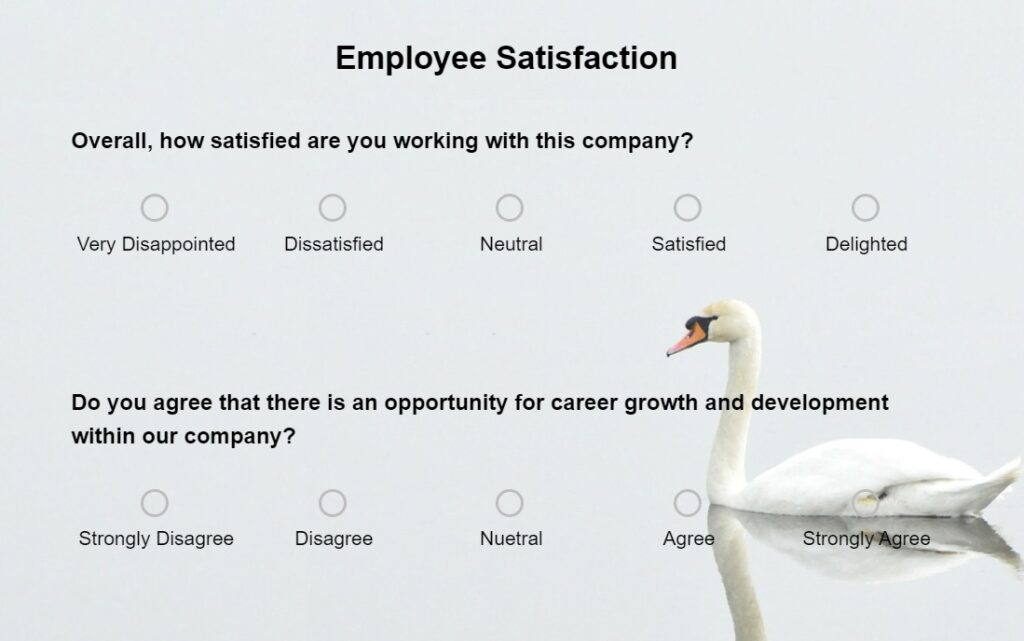
- Performance data review: Study metrics from HR systems, such as productivity reports, error rates, or sales figures. If customer support tickets are rising, this may signal a need for better technical troubleshooting.
- Exit interviews and retention analysis: High turnover is often linked to unmet development needs. Past interviews may reveal recurring frustrations, such as a lack of advancement opportunities.
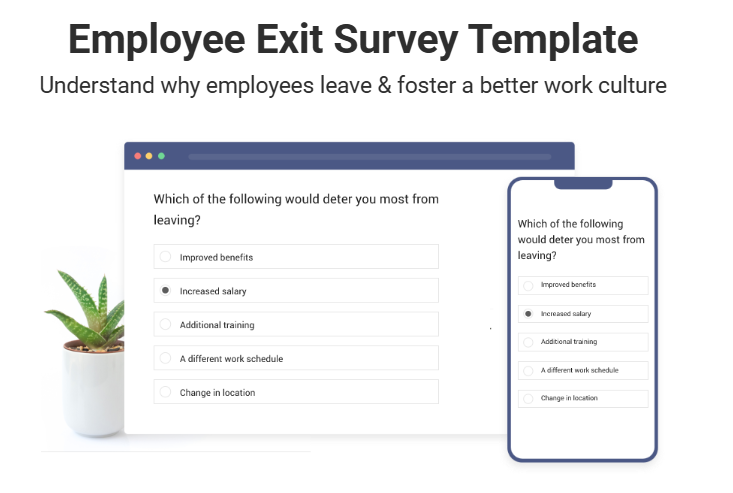
- Trend and gap analysis: Compare current skills to future requirements using skills inventories or SWOT assessments. Industry benchmarks from organizations such as SHRM help place your findings in context.
Validate priorities by involving stakeholders, including managers, HR, and executives. This collaborative approach, highlighted by experts at the University of San Diego, prevents siloed decisions and ensures buy-in from the beginning.
For example, a retail company might find through data analysis that frontline staff need stronger product knowledge to reduce returns by 15 percent. This directly ties training initiatives to revenue growth.
Step 2: Define Clear, Measurable Objectives
Once you know the gaps, the next step in building an employee training plan is turning those insights into specific and measurable objectives. A vague goal like “improve team skills” does not work. Objectives must be concrete so they guide both the design of the training and how its success is measured.
Two frameworks provide structure here: SMART goals and the ABCD model.
SMART Goals
SMART stands for Specific, Measurable, Achievable, Relevant, and Time-bound. This framework ensures accountability and prevents vague promises.
- Specific: Define exactly what will change.
- Measurable: Decide how you will track progress.
- Achievable: Keep the target realistic given resources.
- Relevant: Link directly to business needs.
- Time-bound: Set a clear deadline.
Example: “By the end of Q2, customer support representatives will raise first-contact resolution from 60 percent to 80 percent through scenario-based training tracked in the ticketing system.”
ABCD Model
The ABCD model, developed in instructional design, makes objectives observable and verifiable by answering four questions:
- Audience: Who is being trained?
- Behavior: What action or skill should they demonstrate?
- Condition: Under what context, tools, or situation should they perform it?
- Degree: To what level of accuracy or proficiency should they achieve?
Example: “Customer support representatives (Audience) will resolve customer issues on the first call (Behavior) during live ticketing interactions (Condition) with at least 80 percent accuracy (Degree).”
When combined, these two frameworks give you clarity and focus. Studies from Cognota confirm that SMART and ABCD objectives help align training with measurable outcomes such as reduced errors, improved engagement, and stronger retention. Aim for three to five objectives per program to keep focus tight and achievable.
Step 3: Choose Training Methods and Formats
With objectives in place, select methods that match your audience, content type, and logistical constraints. An effective employee training plan combines approaches to reach diverse learning styles while respecting time and budget.
Common Training Types:
- Onboarding for new hires.
- Compliance training for regulations and safety.
- Product or technical training for systems and processes.
- Leadership and soft skills training for communication, teamwork, and decision-making.
Delivery Formats:
- Instructor-led training: In-person or virtual workshops suited for complex topics.
- eLearning modules: Flexible and self-paced, ideal for compliance and technical content.
- Blended learning: A mix of live sessions and digital modules.
- Microlearning: Five- to ten-minute lessons through mobile apps or videos. Research shows microlearning improves retention by 17 to 20 percent.
- Role-play and simulations: Practical scenarios that reinforce skills. VR simulations can boost retention by up to 75 percent in high-risk contexts.
- Coaching and mentoring: Personalized, one-on-one development.
Choose methods based on evidence. For instance, Elucidat’s research shows simulations outperform lectures for technical training. Pilot-test approaches to confirm their effectiveness before scaling.
Step 4: Develop Engaging Content
Content is the engine of your program. Without engagement, employees forget 70 percent of what they learn within 24 hours. Developing a training program for employees means creating material that is practical, interactive, and tailored to their needs.
Best practices for training content:
- Incorporate variety: Blend video demonstrations, interactive quizzes, SOPs, and gamification. For example, a sales training module could feature a product demo video followed by a gamified quiz. Completion rates improve by up to 50 percent when gamification is applied.
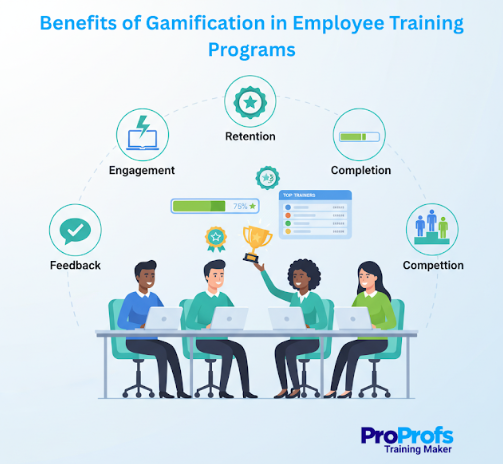
- Emphasize microlearning: Break training into short modules, such as ten-minute videos or activities. Whatfix reports this format improves retention by 20 percent and works well for mobile access.
- Ensure customization and inclusivity: Adapt content to job roles, add captions for accessibility, and include diverse examples. Collaborate with subject matter experts to ensure accuracy.
- Leverage existing resources: Start with pre-built templates for common areas such as compliance or onboarding, then adjust them for your organization’s context.
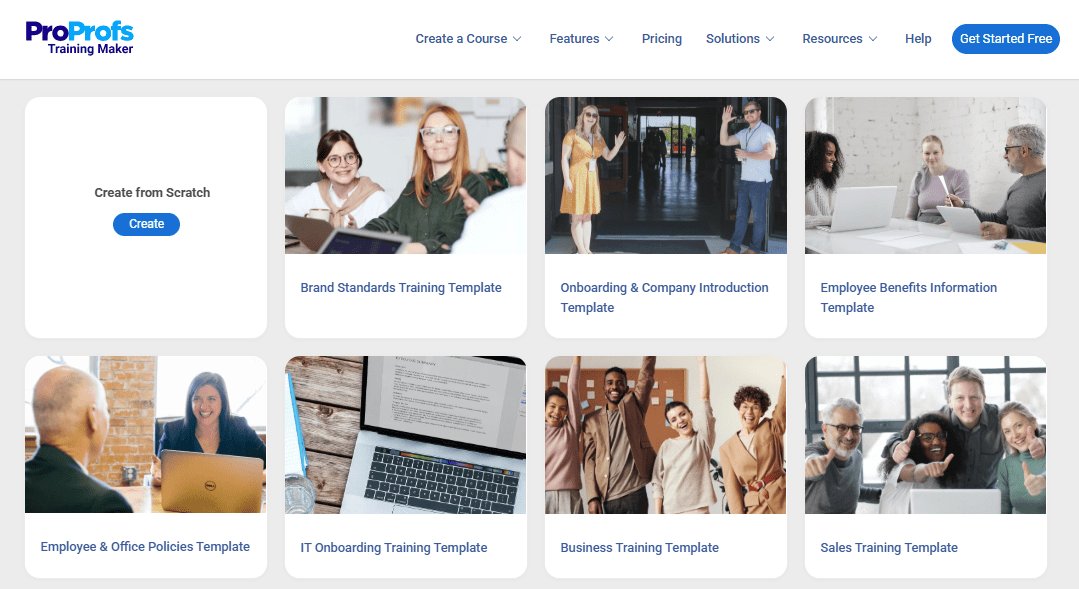
Always pilot content with a small group. Collect feedback, refine, and then scale. A learning management system (LMS) streamlines delivery, tracking, and iteration.
Step 5: Measure & Evaluate Impact
An employee training plan only delivers value if you measure its impact. Use a structured framework to assess ROI and improve future programs. Kirkpatrick’s Four Levels Model, created in the 1950s and still used by 90 percent of Fortune 500 companies, remains the benchmark because it evaluates both learning outcomes and business results.
Level 1: Reaction: Gauge immediate feedback via post-session surveys: “Was the content relevant? How engaging was it?” Aim for 80%+ satisfaction.
Level 2: Learning: Test knowledge gain with pre/post quizzes or assessments. Measure against objectives, e.g., 90% pass rate on skills tests.
Level 3: Behavior: Observe on-the-job application 1-3 months later through manager observations or self-reports. Did ticket resolution improve?
Level 4: Results: Link to business metrics like reduced costs or higher productivity. Use feedback loops, surveys, and 1:1 discussions to identify barriers.
The strongest evaluations blend quantitative data, like completion rates or productivity figures, with qualitative insights from managers and employees. If behavior change (Level 3) is weak, it often signals the need for better workplace support or reinforcement. According to Kirkpatrick Partners, organizations that apply this iterative evaluation process see tangible results, often with productivity gains between 15 and 20 percent.
Step 6: Implement, Optimize, and Iterate
A plan only works if it is executed and adapted. Knowing how to set up a training program is as much about ongoing refinement as it is about launch.
- Implementation: Communicate clearly through email, town halls, or the LMS. Schedule sessions thoughtfully and provide resources like mentors.
- Monitoring and optimization: Track adoption through dashboards. If engagement is low, adjust timing, content, or reminders. Integrate training into performance reviews to embed it into the company culture.
- Iteration: Update content and methods based on data. If microlearning proves more effective than longer modules, expand it. Recognize employee progress with certificates or public acknowledgment. Recognition can increase motivation by 30 percent.
Audit your employee training plan every six to twelve months. Regulations, technology, and business priorities will change, and a plan that evolves with those changes ensures training remains relevant and valuable.
Here’s a quick video that walks you through smarter ways to make your employee training more engaging and effective.
Employee Training Plan Template
Use this simple, customizable template to document your plan. Copy it into a doc or spreadsheet for easy editing or download it here.
| Section | Details | Timeline | Responsible Party | Metrics for Success |
|---|---|---|---|---|
| 1. Goals & Needs | [List business outcomes and gaps identified via surveys/data] | [e.g., Assessment complete by Week 1] | [HR/Manager] | [e.g., 80% of needs validated by stakeholders] |
| 2. Objectives | [SMART/ABCD-formatted goals, e.g., "By Q3, reps resolve 80% tickets on first-contact"] | [End date] | [L&D Team] | [e.g., Pre/post assessment scores] |
| 3. Methods & Formats | [e.g., Blended: eLearning + role-play] | [Schedule: Sessions in Weeks 3-6] | [Trainer/Facilitator] | [e.g., 90% attendance] |
| 4. Content Development | [Modules: Videos, quizzes; Use templates for SOPs] | [Creation by Week 2] | [Content Creator] | [e.g., Pilot feedback score >4/5] |
| 5. Measurement | [Kirkpatrick Levels: Surveys, quizzes, behavior observations] | [Post-training: Weeks 7-10; Follow-up at 3 months] | [Evaluator] | [e.g., 15% productivity increase] |
| 6. Implementation & Iteration | [Phased rollout; Feedback loops; Celebrations: Certificates] | [Launch Week 4; Review quarterly] | [All Stakeholders] | [e.g., 85% completion rate; Adjustments made] |
8 Common Challenges in Building Employee Training Plans (And How to Solve Them)
Even with a solid employee training plan, real-world roadblocks can derail execution. These are the challenges companies run into most often and practical fixes to keep your training program moving.
Challenge 1: Getting Buy-In From Resistant Managers
Managers worry that training steals time from productivity or won’t show ROI.
Fix: Show them the cost of not training. If onboarding drags 12 weeks instead of 8, that’s a month of lost productivity per hire. Share simple dashboards with before/after metrics. When managers see fewer repeat questions and faster ramp-ups, buy-in follows.
Challenge 2: Limited Budget and Resources
Not every company has a large L&D budget or team to build custom programs.
Fix: Start lean. Repurpose internal documents, use free templates, and tap subject matter experts. A 10-minute screen recording from a top performer can be more effective than a polished video. Focus on the 20 percent of skills that deliver 80 percent of results.
Challenge 3: Making Time for Training in Busy Schedules
Employees say they’re too busy to train, but still spend hours fixing the same mistakes.
Fix: Break sessions into 10–15-minute modules that fit between meetings. Use downtime, new hires waiting for system access, seasonal lulls, or the first half-hour of team huddles for training.
Challenge 4: Measuring Results Beyond Completion Rates
Clicking “complete” doesn’t prove learning.
Fix: Track behavior changes, not just course completions. Have managers log observed improvements in weekly reports. Schedule 30-day check-ins where employees demonstrate new skills. Observation often reveals more than analytics.
Challenge 5: Keeping Content Fresh and Relevant
Outdated modules kill engagement and credibility, especially in compliance or technical fields.
Fix: Schedule quarterly reviews for key content and assign clear owners for updates. Use simple, editable templates over complex productions. Update training first when processes change.
Challenge 6: Managing Different Learning Preferences
One-size-fits-all training leaves parts of your workforce behind.
Fix: Build multi-modal content by default. Deliver every key concept through three touchpoints: explain it, show a real example, and create a practice opportunity. This covers most preferences without overcomplicating design.
Challenge 7: Training Remote and Hybrid Teams Effectively
Virtual sessions often lead to multitasking and lower engagement.
Fix: Flip the classroom. Send materials to review first, then use live time for discussion, Q&A, and problem-solving. Keep sessions under 45 minutes, record everything, and add interactive elements like polls or breakout rooms to keep people engaged.
Challenge 8: Scaling Training Across Multiple Locations
Consistency is difficult when different sites, franchises, or regions run their own versions of training. This leads to uneven standards and confused employees.
Fix: Centralize core training in a learning management system (LMS) while allowing local customization for context. Provide shared templates and assign accountability for updates. Track completion and performance across sites through a single dashboard to ensure everyone stays aligned.
Mistakes to Avoid While Creating an Employee Training Plan
Building an employee training plan that delivers real results requires more than following the right steps. Overlooked mistakes can quietly erode engagement, ROI, and long-term success. Backed by research and practical insights, here are five critical pitfalls to avoid when developing an employee training program.
1. Overlooking Learner Motivation and Buy-In
Assuming employees will engage just because training is mandatory is a mistake. Gallup’s 2024 study shows unmotivated learners retain 25% less information. If employees don’t see how training helps their careers or daily work, they disengage.
How to Avoid It: Communicate the “why.” Show personal benefits, like faster workflows or career growth. Use pre-training surveys to shape messaging, and add gamification, badges, and milestones, which can boost motivation by up to 40%.
2. Neglecting Manager Involvement Post-Training
Training fails when managers don’t reinforce it. LinkedIn Learning (2023) found that 65% of programs lose impact without manager support. Employees slip back into old habits if leaders don’t model or encourage new skills.
How to Avoid It: First, train managers on their role. Then, provide coaching tools like guides and checklists. Finally, hold post-training huddles or 30-60-day check-ins to track application.
3. Underestimating Time for Skill Mastery
A single webinar cannot build complex skills. Research shows leadership and advanced technical skills require 20–50 hours of practice. Short sessions create shallow learning and frustration.
How to Avoid It: Break training into phases with spaced repetition. Use simulations, projects, or monthly workshops. Track progress in your learning management system to ensure mastery over time.
4. Ignoring Cultural and Contextual Barriers
One-size-fits-all training is inappropriate for diverse or global teams. McKinsey’s 2024 study found that misaligned training reduced completion rates by 30%. Content that ignores cultural norms feels irrelevant.
How to Avoid It: Localize examples and translate materials. Adapt delivery to match workplace culture, self-paced modules for autonomous teams, guided sessions for hierarchical ones.
5. Failing to Plan for Technology Glitches
Overreliance on tools like learning management systems without backup plans risks failure. Training Industry (2025) reported that 45% of organizations faced disruptions from LMS crashes or device issues.
How to Avoid It: Test platforms across devices and bandwidths. Offer offline alternatives like PDFs. Provide live support. Tools such as ProProfs Training Maker also let you add downloadable handouts, so employees can keep learning even if they lose connection.
Get Free Employee Training Software — All Features, Forever.
We've helped 567 companies train 200,000+ employees. Create courses in under a minute with our AI LMS or use 200+ ready-made courses on compliance, harassment, DEI, onboarding, and more!
Common Types of Employee Training Programs
Different employee training programs serve different purposes. Knowing the types helps you design a plan that matches your company’s needs. Here are five of the most common:
Onboarding Training
Helps new hires settle in by covering company culture, processes, and tools. A structured 30-day onboarding plan with role-specific modules can cut ramp-up time by 25 percent.
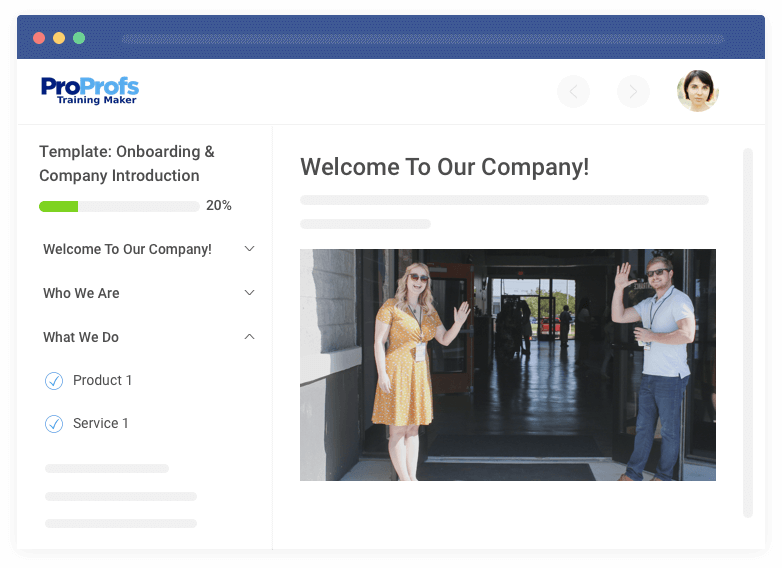
Compliance Training
Ensures employees follow laws, policies, and safety rules. This type of training protects the organization from risks and penalties. For example, annual OSHA training with quizzes can ensure 100 percent compliance.
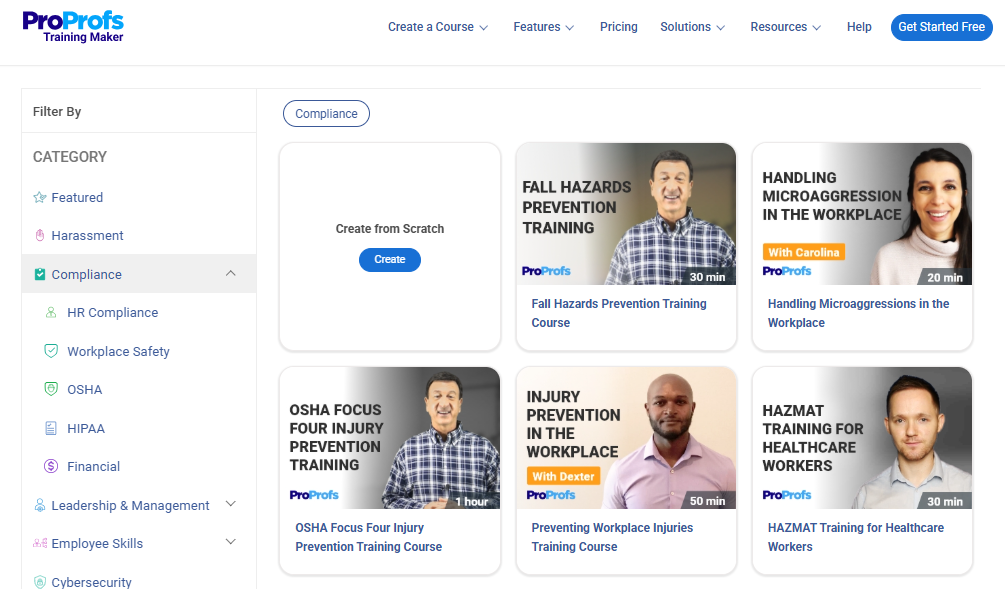
Product or Service Training
Gives employees the knowledge to sell, support, or market your offerings. A retail team that learns product features through simulations could increase sales by 15 percent.
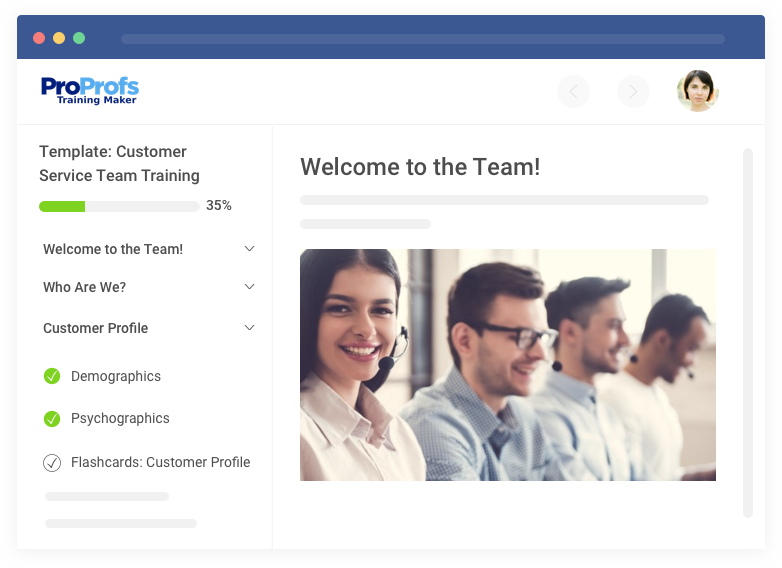
Leadership Development
Prepares managers for responsibilities like decision-making, coaching, and conflict resolution. A six-month leadership program can improve team retention by 20 percent.
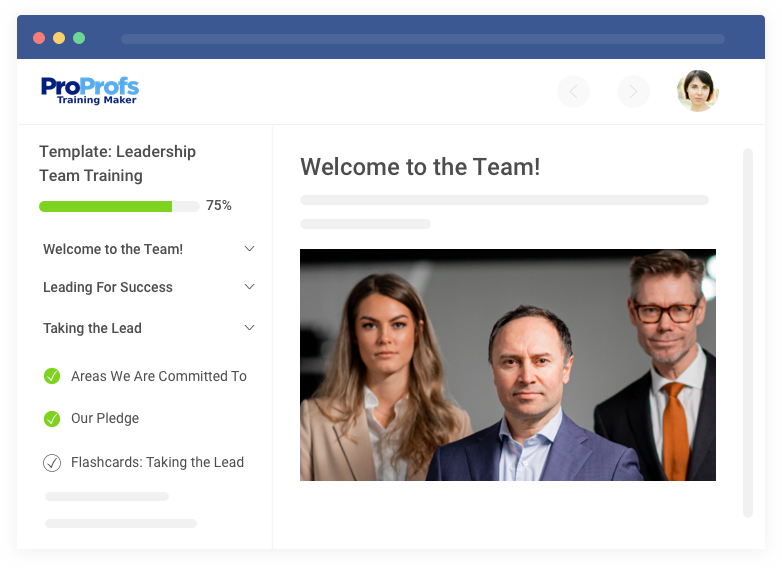
Soft Skills Training
Improves communication, teamwork, and adaptability. For instance, role-playing customer interactions can raise satisfaction scores by 10 percent.
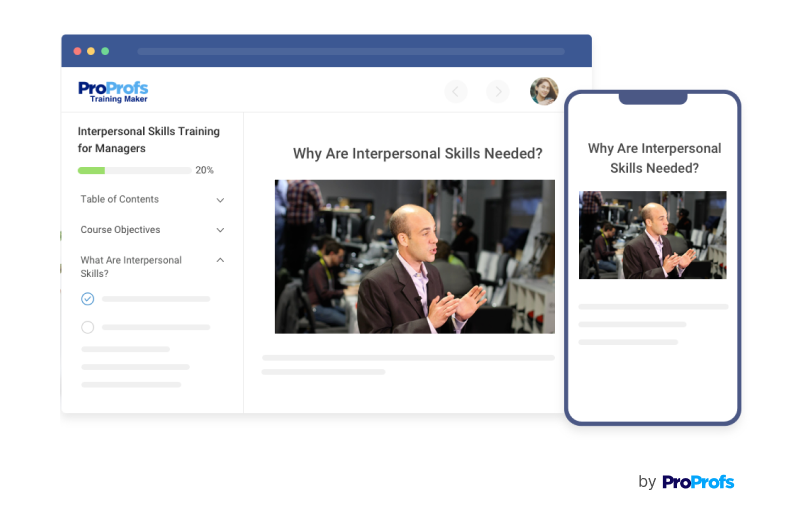
You can save time by using ready-made templates for onboarding or compliance training and then adjusting them to fit your team’s needs. Linking these programs to your goals ensures the training makes a measurable impact.
Get Ready to Create the Best Employee Training Plan
Reading about an employee training plan is only the first step. The real progress happens when you put structure into motion. Start by mapping your goals, drafting clear objectives, and choosing the right formats for your team. Then document it in a plan you can track, test, and refine.
If you are developing a training program for employees, the right tools will save you hours and help you stay consistent. With ProProfs Training Maker, you can build courses, add quizzes, and share handouts that employees can access anytime. It simplifies how to set up a training program so you can focus on outcomes, not admin work.
Your next move is simple: stop treating training as an event and start running it like a system. Open up your template, learn how to build a training plan that grows with your business, and begin shaping real results today.
Frequently Asked Questions
How do you calculate the true ROI of an employee training plan beyond basic metrics?
Move past completion rates. Blend Kirkpatrick’s Level 4 results with ROI formulas: (Benefits – Costs) / Costs × 100. Factor in indirect gains like reduced turnover (worth 1.5–2x salary) and faster innovation cycles. Track pre- and post-benchmarks, link outcomes to revenue growth, and monitor promotion velocity. A holistic view reveals hidden value, like 15 percent faster career progression among trained staff.
In a hybrid work environment, how do you maintain equitable training access and participation?
Offer synchronous virtual sessions with recordings, offline resources, and microlearning modules. Audit tech access and provide stipends where gaps exist. Schedule across time zones and monitor equity with anonymous feedback. LinkedIn’s 2023 insights show hybrid participation levels out when inclusivity and flexibility are baked in.
How can an employee training plan evolve to support long-term career progression?
Align training with career paths. Use skill ladders that connect modules to promotions, refresh them annually during reviews, and track progress in the LMS. Pair employees with mentors to reinforce development. HBR notes this approach can increase retention by 20 percent and shifts training from tactical to strategic.



 We'd love your feedback!
We'd love your feedback! Thanks for your feedback!
Thanks for your feedback!








